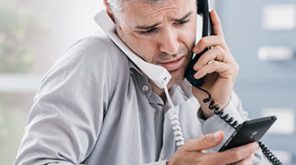If you are a sole trader concerned about Insolvency – read this now
When a limited company becomes insolvent, directors receive protection from personal liability through what is known as the ‘veil of incorporation.’ The difference between this and a sole trader insolvency is that a sole trader and their business are not regarded as separate legal entities. For a sole trader, it becomes a personal insolvency issue whereby they are wholly responsible for the debts of their business, and therefore at risk of personal bankruptcy if they can’t repay creditors. A business decline can occur due to many factors, and sometimes alarmingly quickly. Seeking professional advice from an Insolvency Practitioner (IP) is vital as soon as you know there is a problem, because if the business enters insolvency, business and personal debts of the sole trader will be combined and they may have to declare bankruptcy. Jason Elliott from The Insolvency Experts explains further. There are two formal routes when sole traders become insolvent:
Individual Voluntary Arrangement (IVA)
An IVA is a formal and legally binding insolvency procedure which can last up to 5 years. If an IP believes it is viable, they may recommend an IVA. If the proposal is agreed, creditors who are include are not able to take legal action to recover any debts included within the arrangement. The debtor must continue to repay the agreed amounts throughout the IVA term, otherwise they risk the IP forcing the IVA and petitioning for their bankruptcy. The benefits of an IVA are often that cash flow is improved, and all unsecured debts can be included in the arrangement. Additionally, the funds to repay an IVA can come from future projected profits of the business, or from the sale of an asset or refinancing.
Enforced bankruptcy
When a creditor is owed over £5k, and has unsuccessfully tried to recover their debt, they can petition for bankruptcy of a creditor through the Court. HMRC are known to regularly pursue this route to recover arrears of tax and NI from businesses they believe to be insolvent, but if it is still viable there may be ways to improve the financial situation – by refinancing, for example, or negotiating an IVA.
Declaring bankruptcy
Declaring bankruptcy is an unfortunate last resort for sole traders and can result in personal and business assets being lost. Sole traders must petition for their own bankruptcy through the Court which then hands over control of assets to an appointed supervisor. The assets are then valued, and can be sold in order to repay creditors. The sole trader will not automatically lose their home – this is dependent on the equity available, and whether it is worthwhile for the supervisor to sell it. Whilst the bankruptcy period generally lasts for 12 months, those concerned can rebuild their credit rating during this time. At The Insolvency Experts in Bolton, our main goal is to rescue your business but sometimes that is not possible. Our experienced team are available now on 0300 303 8284 or via our contact us page for honest and confidential advice.

